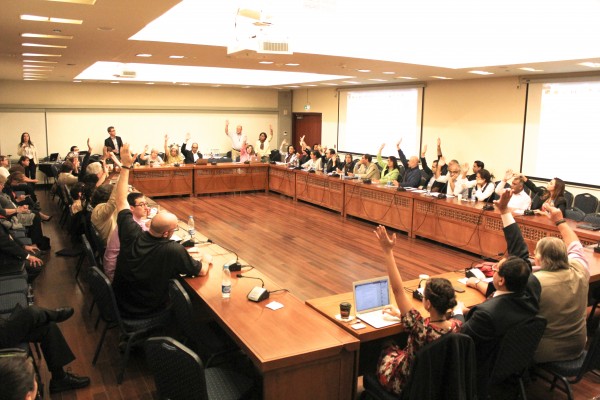On Repatriation of Our Artifacts
By: Nour Tarabieh
@nourtarts
When I sat down with my family to watch the Luxor Sphinx Avenue parade a few weeks ago, the event triggered a sort of introspection on my part over the nature of Egypt’s relationship with its own history.
The parade, by itself, was fine: A well-choreographed amalgamation of nostalgia and national pride. What got to me, however, was the commodification of it all, the way we have packaged our heritage into a product to be consumed – but to be consumed by whom?
In truth, when I saw the displays of allegedly Ancient Egyptian rites and hymns, I didn’t feel connected. It felt foreign to me, as everything else “pharaonic” does. There’s a strange separation between the Egypt of now and the Egypt of then, a separation I feel some Egyptians are desperate to bridge, maybe, to grasp at one of the last things that the world values in our history, despite its richness extending beyond ancient times.
The Ancient Egyptian “aesthetic” becomes a sort of packaged product for others to consume. It dates back to the Egyptomania of Napoleonic times, when Europeans would eat mummies because they thought it would cure disease.
Or when the French hieroglyph decipherer Jean-Francois Champollion convinced Mohamed Ali to let him take a yellow granite obelisk from Ramses II’s time to stand in the Place de la Concorde in Paris in 1829.
Its twin stands alone at the entrance of the Luxor Temple, watching the proceedings alone.
I once attended the Cairo Comix festival in Zamalek’s Mahmoud Mokhtar Museum. It was a fulfilling experience, but one of the talks presented there particularly stood out to me, given by Heba Abdelgawad, part of an organization called Egypt’s Dispersed Heritage.
The talk discussed efforts of repatriation of Egyptian artifacts from museums abroad, a legacy of Egypt’s history of colonization by European powers, particularly the British Empire. Indeed, the British Museum has been made famous by its remarkable collection of Egyptian pieces, including the infamous Rosetta Stone. Yet no one seems to discuss how these artifacts came into British possession.
It’s a glossed-over truth: colonization. An important point the talk discussed was the efforts of local Egyptians in locating and excavating these artifacts, only for the credit to be taken by European “archeologists” such as Howard Carter and Flinders Petrie. Egyptian knowledge of the terrain was the ultimate factor in finding artifacts such as the tomb of Tutankhamun, and yet in popular representations of these discoveries, Egyptians are regulated to mute onlookers.
Critics of the repatriation effort have taken these instances as proof that Egyptians – or, more broadly, denizens of the global south – cannot be trusted with their own heritage, and that is the duty of museums such as the British Museum and the Berlin Museum to adequately protect these artifacts.
At what point does this “preservation” become exploitation? The original Ishtar Gate of Hillah, Iraq, is currently sitting in Berlin, while a replica rests in its place. The British Museum’s arguably most lucrative exhibit is its Egyptian collection, off of which it has produced endless marketing schemes and merchandise, continuing that same cycle of commodification of the Egyptian “aesthetic”, profiting off of a history of colonization and entitlement that ended not even a century ago, and is arguably still taking place today.
The repatriation debate is a long and complicated one, and is admittedly not as simple as “return the artifacts to their owners”. But it should be. It’s frankly a little insulting for an Egyptian to have to travel all the way to London to see the Rosetta Stone. And by the way, the name Egyptians call it is not Rosetta. It’s Rashid.




